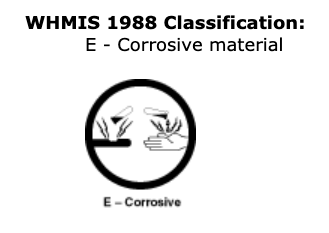Soap - Lunch and Learn Presentation: Difference between revisions
No edit summary |
|||
| Line 49: | Line 49: | ||
=== Equipment === | === Equipment === | ||
* Two pots, ideally stainless steel | * Two pots, ideally stainless steel - NOT aluminum, the lye will eat the aluminum | ||
* Stainless steel spoon | * Stainless steel spoon | ||
* | * Silicone Spatula | ||
* Hand mixer , | * Hand mixer , Braun ''et el'' - This makes mixing an attainable chore , not arm breaking. | ||
* moulds | |||
** I use silicone muffin moulds | |||
** old milk or soy tetra-pak boxes | |||
** various containers around the house | |||
** Fancy icecube trays can work. | |||
** and you can get purpose made moulds for soap. | |||
Key points: | |||
* heat resistant | |||
* not porous | |||
* not too rigid - as you need to get the soap out afterwards. | |||
=== Lye === | === Lye === | ||
Revision as of 20:20, 20 April 2019
Slide 1
|
Why do it? "I can do that." |
Why not? "It's dangerous." |
Slide 2 - What you need
A recipe
Before anything else you need a recipe. i.e. a plan. THis will inform the rest of your steps.
Are you doing a 500 Gram batch, or a 2kg batch?
Are you using hard oils, or soft? or some mix ?
https://www.thesage.com/calcs/LyeCalc.html
Protective Equipment
- Goggles
- Gloves
- Apron
- Surface covering
Equipment
- Two pots, ideally stainless steel - NOT aluminum, the lye will eat the aluminum
- Stainless steel spoon
- Silicone Spatula
- Hand mixer , Braun et el - This makes mixing an attainable chore , not arm breaking.
- moulds
- I use silicone muffin moulds
- old milk or soy tetra-pak boxes
- various containers around the house
- Fancy icecube trays can work.
- and you can get purpose made moulds for soap.
Key points:
- heat resistant
- not porous
- not too rigid - as you need to get the soap out afterwards.
Lye
Corrisive !
Can be tough to source.
- Home hardware
- https://www.homehardware.ca/search?query=lye
- 500g $8.49 /EA
- 3kg $29.99 /EA
† Keep in mind very little Alkali is required; for a 500 ml of oil recipe, 66 grams of NaOH is required.
Can do Kajiji and Amazon.ca as well.
Places that do not carry lye:
- Canadian Tire
- Rona
- Home despot
Oil
Any oil will work but different oils will change your recipe slightly.
Coconut oil is a "Hard" oil, Olive oil is a soft oil.
Water
Small amounts are required, the less you use , the sooner you soap will be cured. The more you use the more help you have getting the reagents to react with each other.
Fragrances and Additives
This stuff is optional
- Essential oils
- Extracts
- Particles of stuff:
- Charcoal
- oatmeal
- lavender buds
- Milk
- honey
- bee's wax
- Clay
- apricot / almond grit
- colourants
- sparkles
Slide 2
Ingredients
Stong Alkalie
Doing it at home
Ingredients
- NaOH - Oils
Slide 3
properties of soal and how ingredients affect it.
Slide 4
Where to go from here
get a sample of NaOH from David:
glass jar
oils good choices
Slide 5
Advanced topics:
- Potassium hydroxide ( KOH ) Versus Sodium Hydroxide ( NaOH )
- Trying oil combos.
- Glycerine soap ( Transparent Soap )
https://laney.edu/cheli-fossum/wp-content/uploads/sites/210/2012/01/13-Saponification.pdf
Bonus Slide 6 - Glycerine soap
I want to do this.
Adding alcohol to soap basically to makes it transparent.
Process:
- Heat the soap until melted
- Add alcohol
- skim off sap from the top.
Bonus Slide 7 - Oil options
Hard oils versus Soft oils
https://www.lovinsoap.com/oils-chart/
My mixes, experiments and refinements : Soap
- Coconut -> hard
- Olive oil -> soft
What mixes is good?
